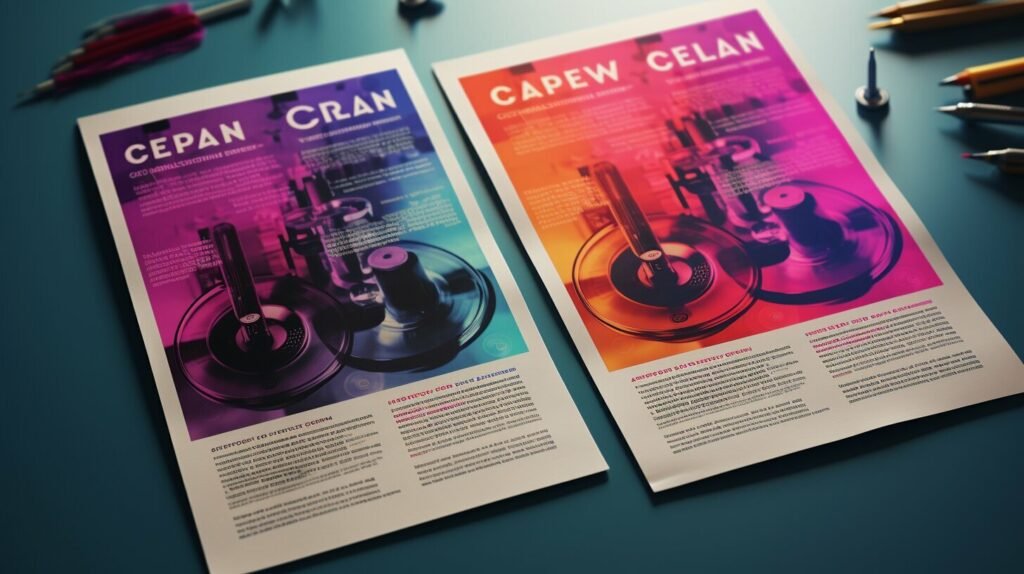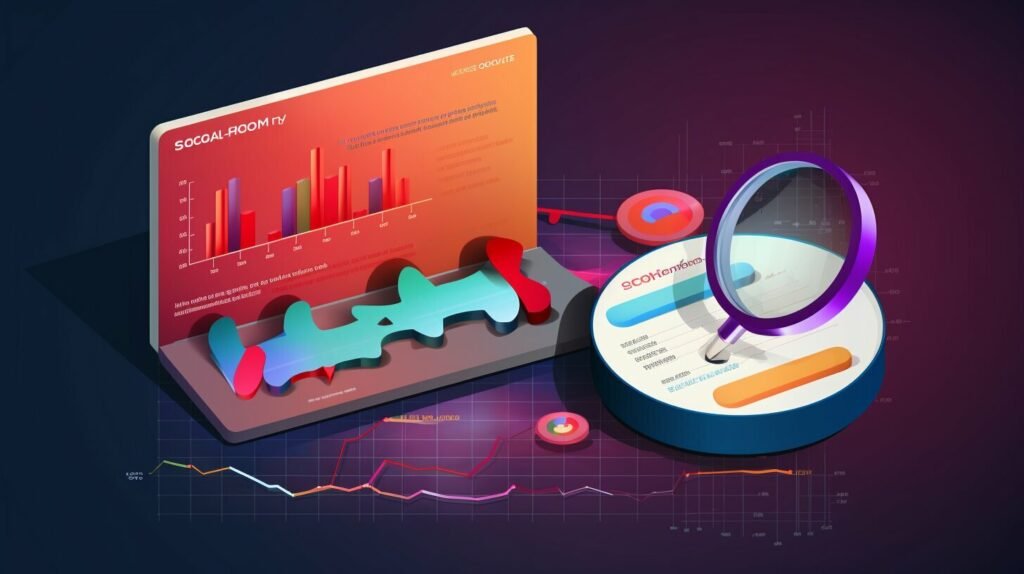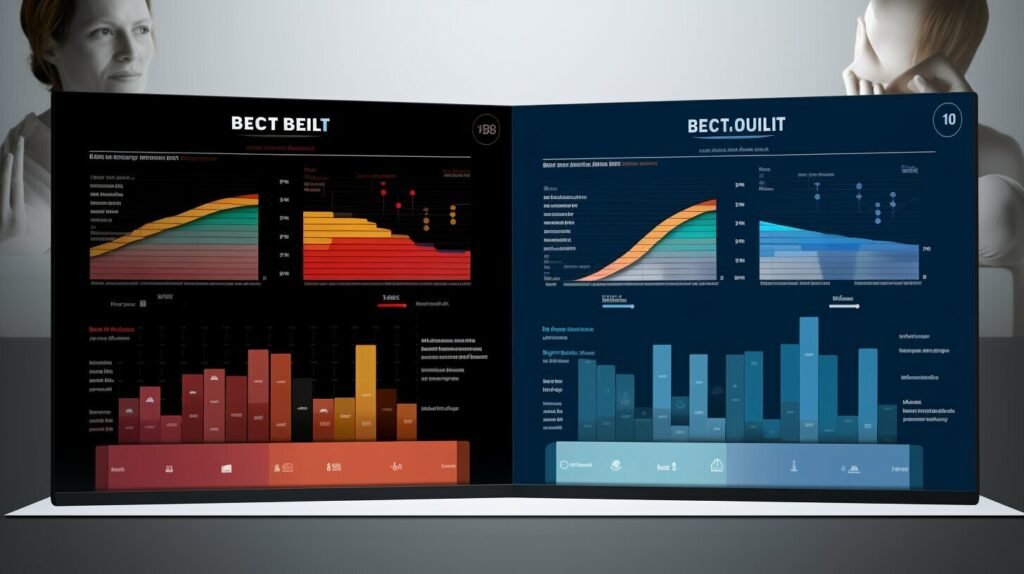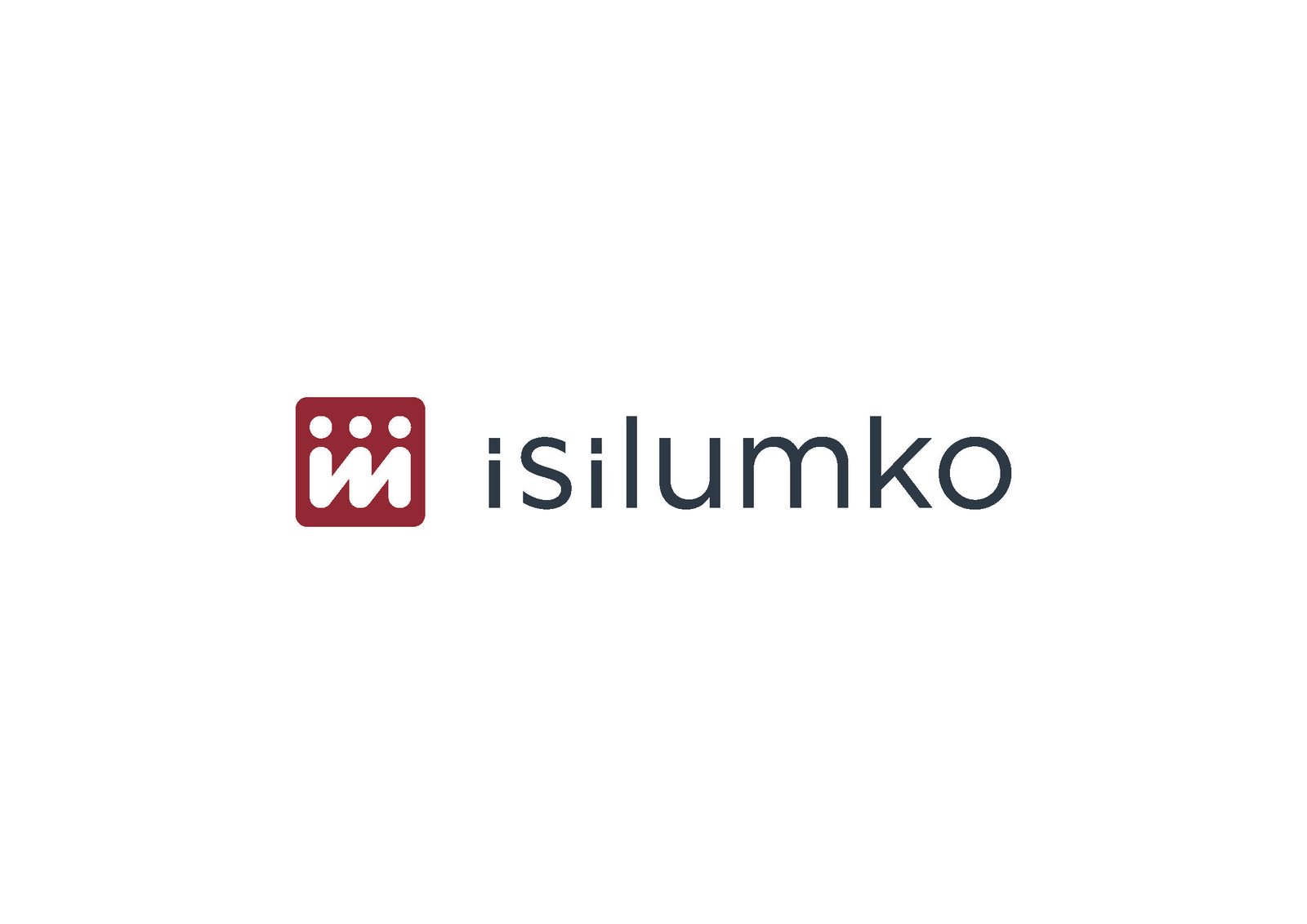A/B testing is a powerful tool for optimizing marketing campaigns. And while it is commonly associated with digital marketing, A/B testing can also be applied to below-the-line (BTL) marketing strategies. In fact, testing the effectiveness of BTL campaigns is just as important as testing digital campaigns, yet it is often overlooked.
In this article, we will explore the concept of A/B testing specifically as it relates to BTL campaigns. We will examine its importance, strategies, best practices, and more. Through real-world case studies and expert insights, we will demonstrate how A/B testing can significantly improve the impact of BTL campaigns, helping marketers to achieve their goals and reach their target audience more effectively.
Key Takeaways:
- A/B testing is a valuable tool for optimizing BTL campaigns
- A/B testing helps improve the effectiveness and performance of BTL marketing strategies
- Proper A/B testing strategies, best practices, and tools can provide accurate and reliable results
- A/B testing helps marketers to stay ahead by leveraging emerging trends and technologies
Understanding A/B Testing in BTL Marketing
A/B testing is a powerful tool used to optimize marketing campaigns by comparing and testing two different versions of a campaign element to determine which performs better. In a below-the-line (BTL) marketing campaign, A/B testing can help determine the most effective way to deliver a message to a specific audience, resulting in higher engagement, conversions, and return on investment (ROI).
The process of A/B testing involves creating two different versions of a campaign element, such as a headline, visual, or call to action. These two versions are then shown to different segments of the audience, with their responses tracked and measured. Based on the results, the version that performs better is identified, and the winning version is used in the final campaign.
One important aspect of A/B testing is to ensure that only one element is changed at a time, so that the results can be attributed to that specific change. For example, changing both the headline and the visual at the same time would make it difficult to determine which change was responsible for the difference in performance.
A/B testing is a valuable tool in BTL marketing, as it allows marketers to collect data and make data-driven decisions about their campaign elements. With this information, marketers can optimize their campaigns and ensure that they are effectively reaching their target audience.

The Importance of A/B Testing for BTL Campaigns
A/B testing is a critical component of BTL marketing campaigns, enabling marketers to make data-driven decisions that optimize campaign effectiveness. By comparing the performance of different campaign elements through A/B testing, marketers can identify the best-performing options and make changes that maximize the campaign’s impact.
A/B testing provides an opportunity to test different campaign elements, including headlines, visuals, calls-to-action, and more. By measuring the performance of these elements, marketers can determine which ones drive the most engagement and conversions, allowing them to optimize campaign performance.
Testing BTL campaigns is especially important compared to traditional “above-the-line” marketing campaigns, which are typically more difficult to measure and optimize because they target a more general audience. A/B testing allows marketers to test specific elements of a campaign and get a more detailed understanding of what resonates with their target audience.
In addition to improving campaign performance, A/B testing also helps marketers identify what elements don’t work and should be avoided. By eliminating ineffective campaign elements, marketers can avoid wasting resources and improve the overall efficiency of their campaigns.
A/B Testing Strategies for BTL Campaigns
A/B testing is a powerful tool for optimizing BTL campaigns, allowing marketers to test different versions of key campaign elements to determine which resonates best with their target audience. Here are some effective strategies and techniques for A/B testing in BTL campaigns:
| Strategy | Description |
|---|---|
| Headline Testing | Testing different headlines can help determine which messaging is most effective in capturing audience attention and driving engagement. Try varying the tone, length, and message of your headlines to see what works best. |
| Visual Testing | Visual elements like images and videos play a crucial role in BTL campaigns. Testing different visuals can help determine which resonate best with your audience and drive the most engagement. |
| Call to Action Testing | The call-to-action (CTA) is the element of a BTL campaign that drives conversions. Testing different CTAs can help determine which wording and placement is most effective in driving your desired action. |
| Content Length Testing | The length of your content can have a significant impact on engagement rates. Testing different content lengths can help you determine the optimum length for your target audience. |
| Landing Page Testing | Testing different landing page layouts, designs, and content can help determine which elements are most effective in driving conversions. |
When developing A/B testing strategies, it’s important to focus on one element at a time to get clear and accurate results. For example, if you’re testing headlines, make sure all other elements of your campaign remain the same across your test variations. This allows you to isolate the impact of your headline on the overall impact of your campaign.
It’s also important to determine the proper sample size and duration for your A/B tests to ensure statistical significance. A small sample size or test duration can lead to unreliable results that don’t accurately reflect the performance of your campaigns.
Finally, make sure to measure the right metrics when testing your BTL campaigns. This includes metrics like click-through rate (CTR), conversion rate, engagement rate, and more. Tracking these metrics can help you make data-driven decisions and optimize the performance of your campaigns.

The Importance of A/B Testing for BTL Campaigns
Testing is everything in marketing, especially in below-the-line (BTL) campaigns. A/B testing is vital for ensuring the best possible marketing strategy, as it allows you to compare two different versions of an element within your campaign and measure their performance.
A/B testing provides powerful insights into how different marketing strategies can impact your campaign, with the potential to improve your campaign’s effectiveness and performance. By optimizing your BTL campaign based on the results of A/B testing, you can make data-driven decisions and maximize your marketing impact.
Without A/B testing, you risk wasting time, money, and resources on campaigns that may not be as effective as they could be. By testing and measuring campaign elements, you can identify the most effective strategies and optimize your BTL campaign accordingly.
Whether you’re testing your headlines, visuals, calls to action, or other elements of your BTL campaign, A/B testing allows you to make informed decisions and improve your marketing strategy. Through rigorous testing and analysis, you can ensure that your marketing messages are resonating with your target audience and maximizing your ROI.

The key to successful BTL campaign optimization is careful measurement and evaluation through A/B testing. By tracking key performance indicators (KPIs) and using data to analyze campaign performance, you can identify areas for improvement and make data-driven decisions to optimize your BTL campaign.
Some of the most important metrics to track when evaluating BTL campaign performance through A/B testing include conversion rates, click-through rates, bounce rates, and engagement rates. By monitoring these metrics and making adjustments based on the results, you can improve the overall effectiveness and performance of your BTL campaign.
Best Practices for A/B Testing in BTL Campaigns
Implementing A/B testing in BTL campaigns requires careful planning and execution to ensure accurate results and meaningful insights. Here are some best practices to follow:
1. Clearly define your goals
Before conducting A/B testing, clearly define what you want to achieve. Identify the specific campaign element you want to test and the metrics you will use to measure success. Having concrete goals will help you design a meaningful test with actionable results.
2. Test one element at a time
When conducting A/B testing, it’s important to test one campaign element at a time to isolate variables and accurately measure the impact of the change. Testing multiple elements simultaneously can lead to ambiguous results and a lack of clarity about which change affected the outcome.
3. Determine your sample size
The size of your sample group is critical for accurate results and statistical significance. Use an online sample size calculator to determine the minimum number of individuals needed for your test. Ensure that your sample size is large enough to detect significant differences and minimize sampling errors.
4. Test for an appropriate duration
Test for a sufficient period to gather enough data and account for any anomalies. Testing too briefly can result in misleading results due to variations in behavior over time or day-of-the-week patterns. We recommend conducting tests for at least a week and preferably longer, depending on traffic volume and campaign objectives.
5. Ensure statistical significance
Statistical significance is essential to meaningful A/B testing. To ensure that your results are statistically significant, use a significance calculator. The test should ideally have at least a 95% confidence level to guarantee that the results are reliable and meaningful.
6. Use A/B testing software
There are various A/B testing software available that automate the process and help you set up and manage tests more efficiently. These tools can provide detailed reports on test results, making it easier to draw valuable insights.

Remember, A/B testing is an iterative process. After analyzing test results, make the necessary changes to improve campaign performance and continue to test. By optimizing your BTL campaigns through A/B testing, you can maximize your marketing impact and achieve better results.
Case Studies: Successful A/B Testing in BTL Campaigns
Real-world examples serve as proof of the effectiveness of A/B testing in BTL campaigns, highlighting the potential impact it can have on marketing performance. Here are a few case studies that demonstrate the power of A/B testing:
| Company | Industry | Tested Element | Results |
|---|---|---|---|
| ABC Corp | Financial services | Calls-to-action | Tested variations of button color and text, resulting in a 25% increase in click-through rates. |
| XYZ Inc | Retail | Product descriptions | Tested variations of language and format, resulting in a 20% increase in conversions. |
| 123 Co | Healthcare | Email subject lines | Tested variations of language and length, resulting in a 15% increase in open rates. |
These examples showcase the versatility of A/B testing in optimizing various campaign elements and driving results. Testing not only helps improve marketing impact, but also provides valuable insights into customer behavior and preferences.

Overcoming Challenges in A/B Testing for BTL Campaigns
A/B testing is a powerful tool for optimizing below-the-line (BTL) campaigns, but it is not without its challenges. Marketers must be aware of these challenges and take proactive steps to overcome them, in order to ensure accurate and reliable results.
Sample Bias
One common challenge faced in A/B testing for BTL campaigns is sample bias. This occurs when the sample used for testing is not representative of the target audience. For example, if the sample consists only of frequent buyers, the results may not accurately reflect the preferences and behavior of occasional buyers or first-time customers.
To overcome sample bias, marketers should strive to create a diverse sample that includes a representative mix of their target audience. They can achieve this by segmenting their audience based on demographic, geographic, and behavioral factors and selecting samples from each segment.
Testing Multiple Variables
Another challenge in A/B testing for BTL campaigns is testing multiple variables simultaneously. When testing multiple variables at once, it can be difficult to determine which variable is responsible for any observed changes in performance.
Marketers can overcome this challenge by testing each variable separately and then combining the results. This approach allows them to isolate the effect of each variable and make data-driven decisions based on the observed performance of each.
Implementing Changes Effectively
Finally, even when A/B testing has identified areas for optimization, implementing changes is not always straightforward. Marketers must ensure that any changes they make to their BTL campaigns are consistent with their brand voice and messaging, and that they do not negatively impact other aspects of the campaign.
To overcome this challenge, marketers should work closely with their creative team to develop alternative versions of a campaign element that are consistent with their brand voice and messaging. They should also carefully monitor performance metrics after making changes to ensure that they do not have unintended consequences.

Tools and Resources for A/B Testing in BTL Campaigns
Successful A/B testing in BTL campaigns requires the right tools and resources. The following are some of the best resources available to marketers for conducting A/B testing:
A/B testing software: There are several A/B testing tools available in the market. These tools allow marketers to create variations of their campaigns, define success metrics, and conduct A/B tests with ease. Some of the popular A/B testing software solutions include Google Optimize, Optimizely, and VWO.
Analytics platforms: Analytics platforms such as Google Analytics, Adobe Analytics, and Mixpanel provide valuable insights into how users interact with a BTL campaign. These tools can be used to track metrics such as bounce rates, click-through rates, and conversions, which can help in optimizing campaign performance.
Heatmaps and session recordings: Heatmaps and session recordings provide visual representations of how users navigate a BTL campaign. Heatmap tools such as Hotjar and Crazy Egg can help marketers identify areas of a campaign that users engage with the most, while session recording tools such as Mouseflow and FullStory can be used to analyze the behavior of individual users.

Image Description: An image showing a laptop with various A/B testing software tools and resources displayed on the screen.
Surveys and feedback tools: Surveys and feedback tools such as SurveyMonkey and Qualtrics can be used to collect feedback from users about a BTL campaign. This can help marketers understand how users perceive their campaigns and identify areas for improvement.
Design and collaboration tools: Design and collaboration tools such as Sketch and Figma can be used to create and collaborate on the visual elements of a BTL campaign. These tools allow for easy creation and iteration of design elements, ensuring that the campaign is optimized for maximum impact.
Conclusion
The right tools and resources are essential for conducting successful A/B testing in BTL campaigns. By leveraging the right tools and resources, marketers can optimize their campaigns for maximum impact and stay ahead of the competition.
The Future of A/B Testing in BTL Campaigns
A/B testing has become a crucial tool for marketers looking to optimize their below-the-line campaigns. As digital marketing continues to evolve, so too will the ways in which A/B testing is utilized. Here are some emerging trends and technologies to keep an eye on:
Artificial Intelligence: AI-powered A/B testing is already being used to automate the testing process, making it faster and more efficient. AI can also help identify patterns and insights that might otherwise go unnoticed, enabling marketers to further refine their campaigns.
Voice Search Optimization: With the rise of voice assistants like Alexa and Siri, optimizing BTL campaigns for voice search will become increasingly important. A/B testing can help identify the most effective keywords and phrases for voice search optimization.

Personalization: Consumers are increasingly demanding personalized experiences, and A/B testing can help marketers deliver. By testing different versions of personalized content, marketers can determine what resonates best with their audience.
Automation: Automating A/B testing can help save time and resources, allowing marketers to focus on other areas of their campaigns. This will become increasingly important as digital marketing becomes more complex.
As these technologies continue to evolve, it’s important for marketers to stay up-to-date with the latest trends and techniques in A/B testing. By leveraging these advancements and continuing to test and refine their campaigns, marketers can maximize the impact of their BTL strategies.
Conclusion
A/B testing for BTL campaigns is a powerful tool that can help marketers optimize their marketing strategies and increase their impact. By comparing different versions of campaign elements and measuring their performance, marketers can make data-driven decisions that lead to improved campaign performance.
It is important for marketers to understand the concept of A/B testing in the context of BTL marketing campaigns and the benefits it can bring. Employing various A/B testing strategies and techniques can help test different campaign elements, track key performance indicators, and optimize overall campaign performance.
Following best practices for A/B testing, including proper test design, sample size determination, test duration, and statistical significance can ensure accurate and reliable results. Overcoming common challenges such as sample bias, testing multiple variables, and implementing changes effectively can lead to successful A/B testing in BTL campaigns.
Marketers can leverage various tools and resources available for A/B testing in BTL campaigns, such as A/B testing software and analytics platforms. Staying ahead of emerging trends and technologies can further enhance the effectiveness of A/B testing in BTL campaigns.
In summary
A/B testing is a crucial aspect of BTL campaigns that marketers should integrate into their marketing strategies. By adopting data-driven decision-making and following best practices for A/B testing, marketers can maximize their marketing impact and achieve success in their BTL campaigns.
How Have Other Industries Implemented BTL Campaigns Successfully?
Successful btl campaigns across diverse industries have revolutionized marketing strategies. From automotive to fashion, these industries have effectively harnessed below-the-line advertising techniques. By targeting specific consumer segments directly, BTL campaigns have stimulated brand awareness, enhanced customer engagement, and ultimately boosted sales. Embracing creativity and personalization, such campaigns have solidified their place as an indispensable tool in modern marketing practices. Additionally, leveraging technology in BTL campaigns has enabled brands to gather valuable data on consumer behavior and preferences, which can be utilized to refine their strategies further. This integration of tech tools such as augmented reality and social media platforms has created more interactive and immersive experiences for consumers. As a result, brands are not only able to reach their target audience effectively but also foster a deeper connection with them.
What are the best strategies for conducting A/B testing in BTL campaigns to maximize marketing impact?
When conducting A/B testing in BTL campaigns, it’s important to focus on key insights btl campaigns to maximize marketing impact. Start by clearly defining your objectives and target audience. Create two variations and test them with a small, targeted audience. Analyze the results and apply the winning variation to the larger campaign. Once you determine which variation performs better, consider implementing additional adjustments based on audience feedback and engagement levels. Establishing clear campaign objectives will guide future A/B tests and help tailor your campaigns more effectively. This continual refinement process can lead to improved outcomes and a better overall understanding of your audience’s preferences.
FAQ
Q: What is A/B testing in BTL marketing?
A: A/B testing in BTL marketing involves comparing two different versions of a campaign element and measuring their performance to make data-driven decisions.
Q: Why is A/B testing important for BTL campaigns?
A: A/B testing is crucial for optimizing BTL campaigns as it helps improve effectiveness and performance by testing different campaign elements.
Q: What are some A/B testing strategies for BTL campaigns?
A: There are various strategies and techniques that can be employed for A/B testing in BTL campaigns, including testing different campaign elements such as headlines, visuals, and calls to action.
Q: How can BTL campaign performance be measured through A/B testing?
A: BTL campaign performance can be measured through A/B testing by tracking key performance indicators (KPIs) and using data to analyze and optimize campaign performance.
Q: What are some best practices for A/B testing in BTL campaigns?
A: Best practices for A/B testing in BTL campaigns include proper test design, sample size determination, test duration, and statistical significance to ensure accurate and reliable results.
Q: Are there any case studies that showcase successful A/B testing in BTL campaigns?
A: Yes, there are real-world case studies that demonstrate the effectiveness of A/B testing in BTL campaigns, showcasing companies that have achieved significant improvements in their marketing impact through A/B testing.
Q: What are some challenges faced in A/B testing for BTL campaigns?
A: Common challenges in A/B testing for BTL campaigns include sample bias, testing multiple variables, and implementing changes effectively. Strategies and insights are provided to overcome these challenges.
Q: What tools and resources are available for A/B testing in BTL campaigns?
A: Various tools and resources are available for conducting A/B testing in BTL campaigns, including A/B testing software and analytics platforms that can aid marketers in optimizing their campaigns.
Q: What does the future hold for A/B testing in BTL campaigns?
A: The future of A/B testing in BTL campaigns is explored, discussing emerging trends and technologies that are shaping the field and how marketers can leverage these advancements to stay ahead.





